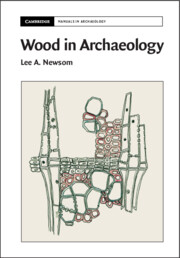Book contents
- Wood in Archaeology
- Cambridge Manuals in Archaeology
- Wood in Archaeology
- Copyright page
- Dedication
- Contents
- Plates
- Figures
- Tables
- Preface
- Acknowledgments
- 1 Introduction
- 2 Archaeological Wood
- 3 Woody Plants
- 4 Wood Anatomy Basics
- 5 Working with Archaeological Wood
- 6 Working with Archaeological Wood
- Book part
- Bibliography
- Index
2 - Archaeological Wood
Published online by Cambridge University Press: 02 April 2022
- Wood in Archaeology
- Cambridge Manuals in Archaeology
- Wood in Archaeology
- Copyright page
- Dedication
- Contents
- Plates
- Figures
- Tables
- Preface
- Acknowledgments
- 1 Introduction
- 2 Archaeological Wood
- 3 Woody Plants
- 4 Wood Anatomy Basics
- 5 Working with Archaeological Wood
- 6 Working with Archaeological Wood
- Book part
- Bibliography
- Index
Summary
This chapter begins by overviewing the history of discoveries and related circumstances involving archaeological wood, with emphasis on developments since the mid-18th-century emergence of archaeology as a scientific discipline. The prominent role of environmental contexts that afford exceptional organic preservation is explicit, with material from perpetually moist, or conversely, quite arid settings having been dominant themes from the beginning. The relevance and variety of archaeological contexts, site formation processes, and the dominant forms of wood preservation (carbonized, waterlogged, desiccated, mineralized), as well as the different classes or categories of wooden remains and objects that may be found archaeologically are explained in detail. Choices, procedures, and issues related to excavation, field sampling, field recovery, and immediate handling of archaeological wood are also described.
- Type
- Chapter
- Information
- Wood in Archaeology , pp. 23 - 72Publisher: Cambridge University PressPrint publication year: 2022

